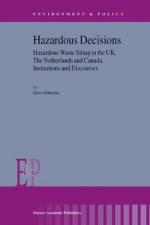|
This section contains 270 words (approx. 1 page at 300 words per page) |
Regardless of the specific technologies to be employed, there are many technical and nontechnical considerations to be addressed before hazardous waste can be treated or disposed of at a given location. The specific nature and relative importance of these considerations to the successful siting reflect the chemodynamic behavior (i.e., transport and fate of the waste and/or treated residuals in the environment after emission) as well as the specifics of the location and associated, proximate areas. Examples of these considerations are: the nature of the soil and hydrogeological features such as depth to and quality of groundwater; quality, use, and proximity of surface waters; and ambient air quality and meteorological conditions; and nearby critical environmental areas (wetlands, preserves, etc.), if any. Other considerations include surrounding land use; proximity of residences and other potentially sensitive receptors such as schools, hospitals, parks, etc.; availability of utilities; and the capacity and quality of the roadway system. It is also critical to develop and obtain the timely approval of all appropriate local, state, and federal permits. Associated with these permits is the required documentation of financial viability as established by escrowed closure funds, site insurance, etc. Site-specific standard operating procedures as well as contingency plans for use in emergencies are also required. Additionally, there needs to be baseline and ongoing monitoring plans developed and implemented to determine if there are any releases to or general degradation of the environment. One should also anticipate public hearings before permits are granted. Several states in the United States have specific regulations which restrict the siting of hazardous waste management facilities.
|
This section contains 270 words (approx. 1 page at 300 words per page) |


